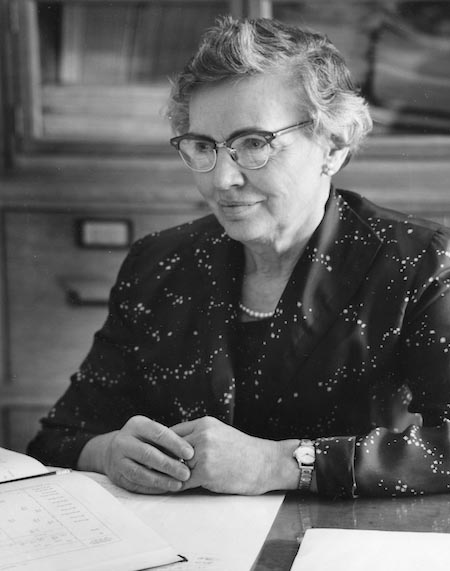Charlotte Sitterly
Charlotte Sitterly

Charlotte Moore Sitterly is best known for her extensive spectroscopic studies of the Sun and chemical elements. Her tables of data are known for their reliability and still used regularly. She received a B.A. in mathematics from Swarthmore College, U.S., in 1920 and went to work for the Princeton University Observatory, U.S. upon graduation.
Five years later, after work completing calculations needed to use photographic plates in determining the position of the Moon and research on binary starts and stellar mass, she developed an interest in astrophysics. This interest led her to work on solar spectroscopy at the Mount Wilson Observatory, U.S. This work helped to identify the chemical elements in the sun, analyze the spectra of sunspots, and re-determine the new International Angstrom scale.
In 1931, she earned her Ph.D. in astronomy from the University of California, Berkeley and returned to Princeton University as a research assistant. One of the most significant contributions from her research was the identification of technetium in sunlight. In 1945, she joined the National Bureau of Standards and created tables atomic spectra and energy levels that have remained essential references in spectroscopy.
In 1949, she was the first woman elected as an associate of the Royal Astronomical Society of Great Britain. She retired from the National Bureau of Standards in 1968, but she continued researching at the Naval Research Laboratory.
In 1972, she was the first woman awarded the William F. Meggers Award for excellence in spectroscopy. She was also a member of OSA’s first class of Fellows in 1959. In 1988, JOSA B honored her work with a commemorative issue.
Sitterly died in 1990 at the age of 91.
Document Created: 26 July 2023
Last Updated: 28 August 2023
